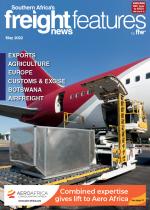SACO CFR is optimistic about the airfreight sector, with several developments underscoring its move towards growing its business.According to airfreight director Stephen Bishop, the company has managed to obtain several preferential contract rates with premium carriers for exports. “This is on key trade lanes which enable us to offer a multitude of options to our clients. With the new winter schedule in place, we have also enhanced our import offerings to add capacity on our key trade lines, with a specific focus on Europe and the Far East on the back of our promo drive that took place throughout April.”Bishop said the increased capacity available in the market for its winter schedule, which was contrary to normal trends as f lights were generally withdrawn at this time of year, boded well for volumes. “It has enhanced options for ourselves and likewise then our clients,” he told Freight News. “On the export side, the first quarter started very well for us. There was an expected slight slowdown at the start of April due to school holidays along with national and international holidays, but we foresee the volumes returning quickly. We believe the export volumes are attributed to many clients and suppliers opening up again to send their products globally. More so, the rest of the world also seems to be opening up again.”Megan Ekermans, responsible for route development, says they are bullish in their outlook for airfreight given the current capacity available, albeit with higher rates.“The use of dynamic rate systems for some carriers has been challenging as this voids the traditionally published market rates. We have circumvented this to a great extent with our prenegotiated contact rates.”She said airlines were starting to use more digital platforms for booking cargo, viewing schedules and for some, even obtaining rates. “This is a very positive development as our controllers have access to these platforms and many are integrated with our systems.”The sector, however, was not without challenges, and there were still some hurdles that impacted business, said both Bishop and Ekermans. At the top of the list are the regular fuel surcharge increases which impact freight rates.“Oil prices have increased rates for pickup, delivery and transfers from the coastal region to Johannesburg as well,” said Bishop.Furthermore, the reliance on China for export and import cargo was another challenge. “Ongoing lockdowns in that region impact the global market quite significantly,” said Ekermans.

